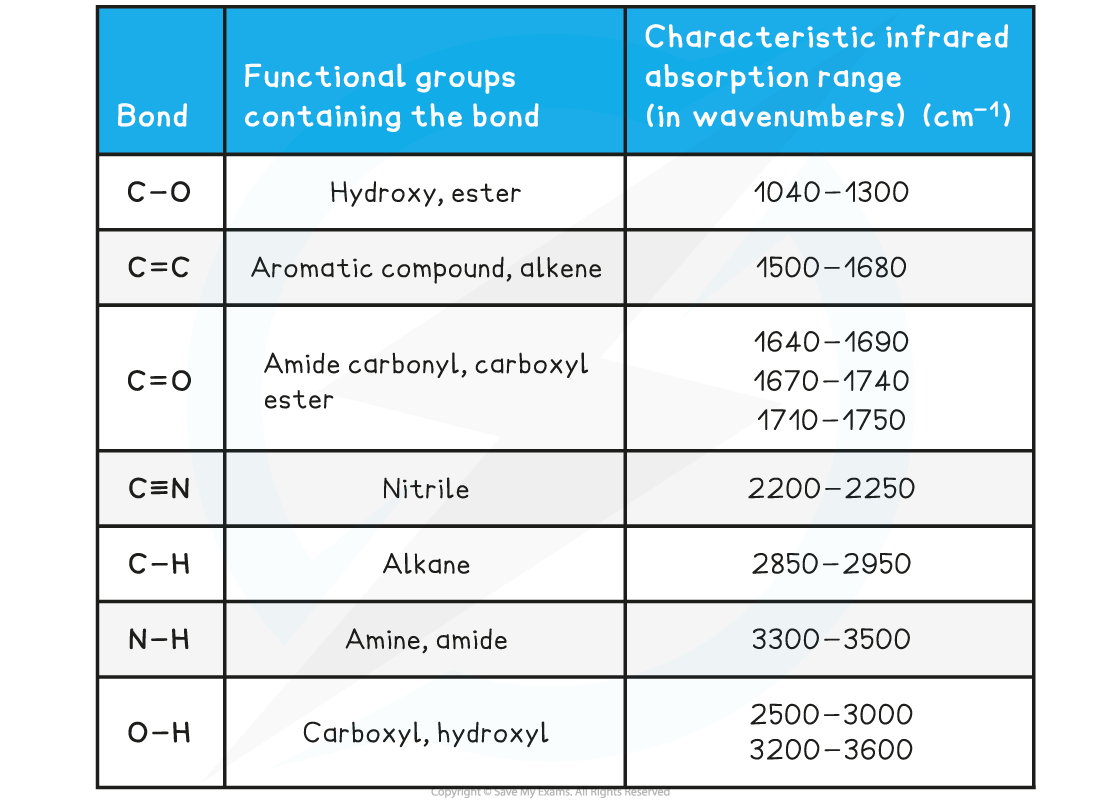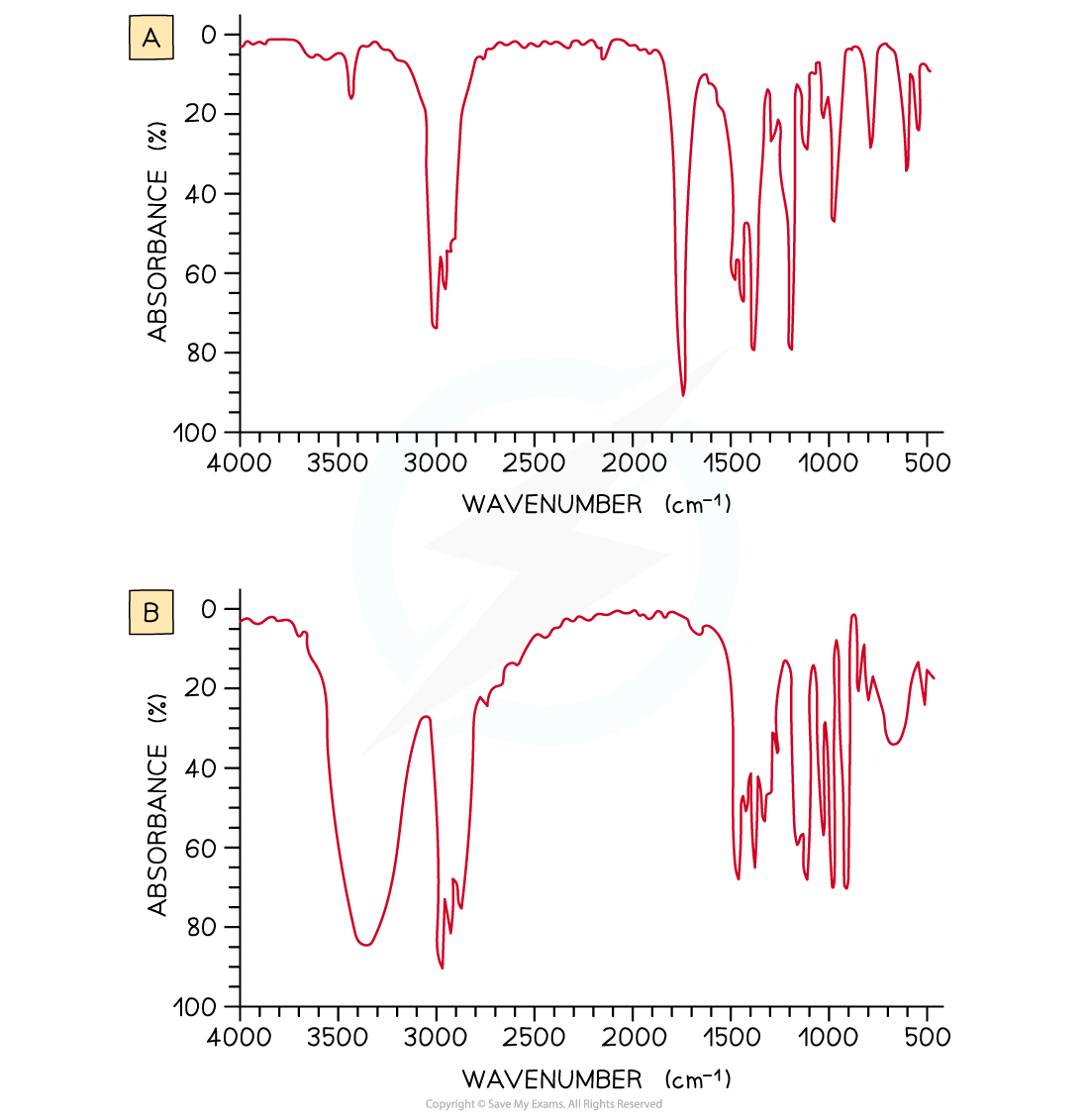- 翰林提供学术活动、国际课程、科研项目一站式留学背景提升服务!
- 400 888 0080
Edexcel A Level Chemistry:复习笔记3.6.2 Infrared (IR) Spectroscopy
Interpreting an IR Spectrum
- Infrared (IR) spectroscopy is a technique used to identify compounds based on changes in vibrations of atoms when they absorb IR of certain frequencies
- A spectrophotometer irradiates the sample with electromagnetic waves in the infrared region and then detects the intensity of the wavelength of IR radiation which goes through the sample
- All organic molecules absorb IR radiation and depending on which energies of radiation are absorbed, bonds between atoms will vibrate by stretching, bending and twisting
- The molecules will only vibrate at a specific frequency
- The resonance frequency is the specific frequency at which the molecules will vibrate to stimulate larger vibrations
- Depending on the rest of the molecule, each vibration will absorb specific wavelengths of IR radiation which are also shown as the reciprocal of the wavelength
- This unit is called the wavenumber (cm-1)
- Particular absorbance have characteristic widths (broad or sharp) and intensities (strong or weak)
- For example, hydrogen bonds cause the O-H bonds in alcohols and carboxylic acids to be broad whereas the C-O bond in carbonyl (C=O) groups have a strong, sharp absorbance peak
- The energies absorbed by different functional groups are given as a range and an unknown compound can be identified by comparing its IR spectrum to the IR spectrum of a known compound
Absorption Range of Bonds Table

- Due to some absorption bands overlapping each other, other analytical techniques such as mass spectroscopy should be used alongside IR spectroscopy to identify an unknown compound
Worked Example
Analysing IR Spectra
Look at the two infrared spectra below and determine which one corresponds to propanone and which one to propan-2-ol
Answer
-
- IR spectrum A is propanone and spectrum B is propan-2-ol.
- In IR spectrum A the presence of a strong, sharp absorption around 1710 cm-1 corresponds to the characteristic C=O, carbonyl, group in a ketone.
- In spectrum B the presence of a strong, broad absorption around 3200-3500 cm-1 suggests that there is an alcohol group present, which corresponds to the -OH group in propan-2-ol.
转载自savemyexams

早鸟钜惠!翰林2025暑期班课上线

最新发布
© 2025. All Rights Reserved. 沪ICP备2023009024号-1








